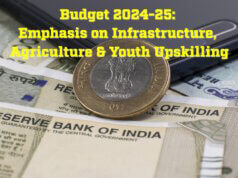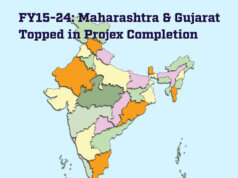 There are bad infrastructure problems, but they need to be addressed first in rural India, and then in the cities. The nation already has a healthy middle class, but high paying work needs to be generated in rural areas. Once this is done, India would emerge as a truly developed nation, writes Dr. Ravi Batra, a professor of economics at Southern Methodist University, Dallas, USA, and well-known author.
There are bad infrastructure problems, but they need to be addressed first in rural India, and then in the cities. The nation already has a healthy middle class, but high paying work needs to be generated in rural areas. Once this is done, India would emerge as a truly developed nation, writes Dr. Ravi Batra, a professor of economics at Southern Methodist University, Dallas, USA, and well-known author.
Has the slump ended? Many argue that it has, but since the culprit behind it continues to thrive, I think it is not likely to end until 2016. It is my belief that the main cause of poverty and unemployment anywhere in the world, including India, China and the United States, is the rise in income and wealth disparities. What causes such disparities? A relentless rise in the gap between worker productivity and real wages!
The wage productivity gap is the extent by which a country’s labour productivity exceeds its average real wage. A healthy economy requires it to be low and stable, but if it rises for a while, all sorts of problems occur such as high levels of government debt, stock market euphoria followed by a crash, and severe unemployment. Let me start with a simple statement, namely a strong economy requires that there is a balance between supply and demand. Here supply means the production of goods and services, and demand means society’s need for such things. Thus, economic balance requires that
Supply = Demand
Without this balance, there is either high unemployment or high inflation. The main source of supply is labour productivity, whereas the main source of demand is the real wage, or people’s purchasing power. When productivity rises, production or supply goes up and when the real wage increases, consumer spending and hence demand go up. Because of business investment and new technology, productivity grows over time, which means supply rises over the years. Therefore, demand must also grow proportionately to maintain the economic balance, implying that the real wage must rise in proportion to productivity.
If the real wage fails to grow as fast as productivity, then over time, a wage-productivity gap develops and
Supply > Demand
This causes unemployment because if companies are unable to sell what they produce or supply, then they have to layoff some workers to trim their production. The rise in the wage-productivity gap in turn sharply raises profits, thus raising income and wealth inequality. Hence we conclude that wealth concentration generates unemployment, recessions and poverty. This is the logic that applies to every economy. Thus, unless and until wealth concentration declines, the world will not be free from the scourge of joblessness.
Let us see how this theory applies to India’s economy. India has made great strides since the 1990s when it largely abandoned Soviet-style planning and Marxist economic policies. The nation opened its markets to international competition, thereby attracting high levels of foreign investment and technology, especially from firms that benefited by outsourcing their operations to places like Bangalore, Mumbai and New Delhi. Thus, India’s bountiful skilled labour along with liberalised economic policies generated a booming economy and a semi-industrialised nation.
However, there were some serious side-effects of this boom. The wage-productivity gap shot up, leading to rocketing wealth concentration and hence corruption, urban areas became polluted, while rural poverty declined only slightly. From most estimates more than 300 million people live below the poverty line. The only way to reduce poverty quickly is to focus on the putting-out system that preceded capitalism in Europe. There a merchant would supply equipment and raw materials to families, who would then produce a finished product that the merchant would collect and then sell to consumers. This system provided work to millions of people with little investment. However, the merchant paid low prices to families and pocketed much of the profit.
The same thing can be done in rural India but with the help of the government. The government should supply machinery and raw materials to villagers, train them properly in the use of equipment and then collect the product for marketing it in cities and abroad. This way many small firms can be built without heavy capital investment to erect office buildings. Let homes become factories. In fact, India already has a large cottage industry, but it has not reduced poverty significantly, because here again the merchant, as in Europe, is in charge of marketing the products, and ironically wealthy merchants pay puny prices to workers. If such middlemen are eliminated, then rural income would quickly rise.
Some argue that cottage industries cannot compete effectively with firms engaged in mass production. This is not true. It is the middleman who makes cottage goods uncompetitive by raising their prices. If workers are trained properly in the use of modern machines and supplied high quality raw materials, there is no why reason why they cannot build good products at low prices. Of course, machines need power to operate; so the government should also focus on rural electrification.
There are, indeed, bad infrastructure problems, but they need to be addressed first in rural India, and then in the cities. Small towns are where over 60 per cent of the people reside, and most of them live on subsistence wages or earnings. The nation already has a healthy middle class, but high paying work needs to be generated in rural areas. Once this is done, India would emerge as a truly developed nation.











